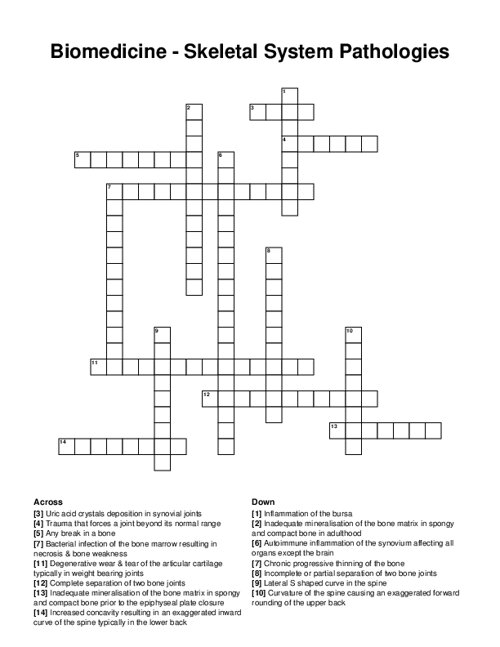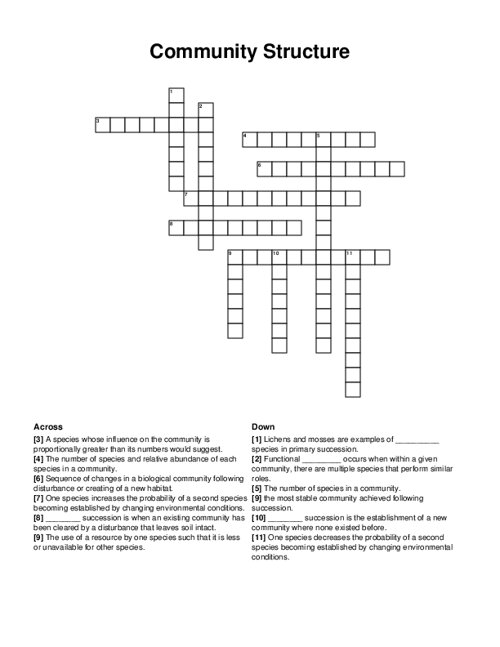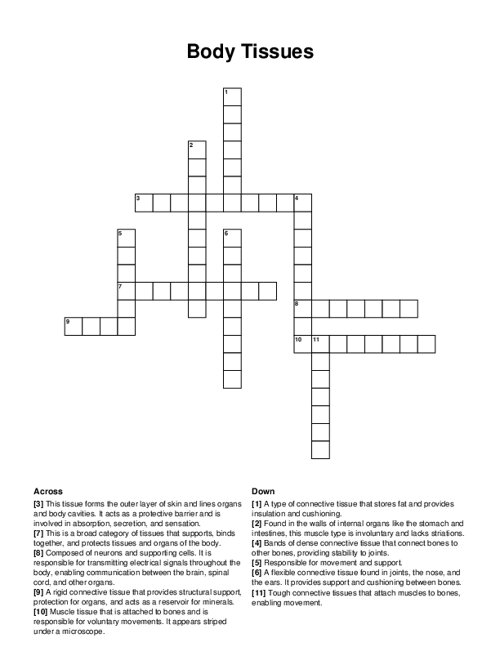Biology: The Molecules of Life Crossword Puzzle
Download and print this Biology: The Molecules of Life crossword puzzle.
Related puzzles:
QUESTIONS LIST:
- fatty tissues: these cushion your organs, provide your body with insulation, and store energy for later use
- hydrocarbons: molecules that are composed of only carbon and hydrogen
- glycogen: the storage of excess sugar which is a chain of many glucose monomers
- polymers: long chains of monomers
- monomers: large molecules that are built from many similar, smaller molecular units
- steroids: examples of these are the male and female sex hormones, testosterone and estrogen
- chains: most polypeptide _ are at least one hundred amino acids in length
- proteins: responsible for almost all of the day-to-day functioning of organisms
- hydrophilic: attract water molecules
- amino acid: the twenty "letters" of the protein alphabet
- substrate: a specific reactant an enzyme acts upon
- enzyme: the main catalyst of chemical reactions in organisms; they lower the activation energy requirement barrier so that a reaction can proceed at normal cell temperatures
- oil: a common example of a lipid which is hydrophobic meaning "water-fearing"
- polypeptide: each link of amino acids in this chain is created by a dehydration reaction between the amino group of one amino acid and the carboxyl group of the next
- r group: also called the "side group" is the fourth bond of the central carbon in all amino acids and which is responsible for the particular chemical properties of each amino acid
- carbohydrate: organic compound made up of sugar molecules
- cellulose: "building materials" in plants commonly referred to as fiber; they protect cells and stiffen the plant preventing it from flopping over
- denaturation: a visible example of this is an egg white changing from a clear liquid to a white solid while frying due to heat which is causing the egg's proteins to lose its normal shape
- cholesterol: a steroid which is also the starting point from which your body produces other steroids
- saturated: these fats are solid at room temperature; examples include lard and butter
- unsaturated: these fats are liquid at room temperature; examples include oils from vegetables, fruits, and fish





